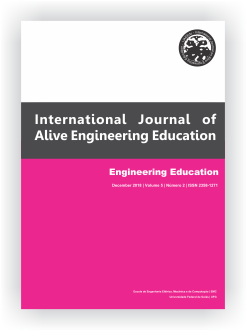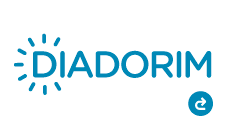Evaluation of Academic Experience in Learning Education over Simulators Softwares
DOI:
https://doi.org/10.5216/ijaeedu.v5i2.54716Keywords:
ICAEEDUAbstract
This article presents an overview of simulated education through computational tools.
In recent years, educational institutions have been working even harder in the application of virtual teaching and learning environments, which are available to different undergraduate and technical courses.
During the learning process, the student is invited to try out some forms of different subjects and learning contents.
The use of technologies gained a great deal of space in these institutions in order to allow students to experiment different theories in practical settings.
Simulators allow students to conduct hands-on experiments without the need for real environments, which consequently generates costs and also a planning effort.
This paper presents a study of the application of software simulators in different technological courses.
After the application of the simulators, the students were invited to answer a Quiz in order to understand the effectiveness of the use of the simulators in the learning of each one.
Results show that students considered the use of simulators to be advantageous and important, but it is still not enough to suppress the use of practical classes in real environments.
References
GOMES, L. F. Distance education in Brazil: perspectives and challenges. Avaliação: Revista da Avaliação da Educação Superior (Campinas), v. 18, n. 1, p. 13-22, 2013.
FERREYRA, M. M. et al. At a crossroads: higher education in Latin America and the Caribbean. World Bank Publications, 2017.
SILVA, C. A. G., LIMA, R. U. T., OLIVEIRA, Z. M. D. S., PADILHA, A. W., dos SANTOS, E. L., SANTOS FILHO, H. T., and PEDROSO, C. M. Análise da Influência da Formação de Ensino Médio no Desempenho Acadêmico de Estudantes de Engenharia. International Journal on Alive Engineering Education, v. 3, n. 2, p. 65-78, 2016.
DILLENBOURG, P., SCHNEIDER, D., SYNTETA, P. Virtual learning environments. In: 3rd Hellenic Conference" Information and Communication Technologies in Education". Kastaniotis Editions, Greece, 2002. p. 3-18.
SILVA, C. A. G., SANTOS, E. L., PEREIRA, K. L. R., COELHO, M. M. and PELACINI, D. A. F. Simulation Laboratory for Learning in Electronic Digital Improvements of Learning Electrical Engineering. International Conference on Alive Enginnering Education (ICAEEDU). Puerto Iguazú, Misiones, Argentina, 2018.
ALONSO, F. et al. An instructional model for web?based e?learning education with a blended learning process approach. British Journal of educational technology, v. 36, n. 2, p. 217-235, 2005.
PAZOS, J. et al. A virtual classroom based on academic memories. Proceedings of Information Society and Education: Monitoring a Revolution, p. 87-92, 2002.
FELDER, R. M. et al. Learning and teaching styles in engineering education. Engineering education, v. 78, n. 7, p. 674-681, 1988.
ARMSTRONG, S. J. and FUKAMI, C. V. The SAGE handbook of management learning, education and development. Sage, 2009.
PRINCE, M. J., and FELDER, R. M. (2006). Inductive teaching and learning methods: Definitions, comparisons, and research bases. Journal of engineering education, 95(2), 123-138.
FELDER, R. M. and SILVERMAN, L. K. Learning and teaching styles in engineering education. Engineering education, v. 78, n. 7, p. 674-681, 1988.
FRY, H., KETTERIDGE, S. and MARSHALL, S. A handbook for teaching and learning in higher education: Enhancing academic practice. Routledge, 2008.
SQUIRES, D. and PREECE, J. Predicting quality in educational software. Interacting with computers, v. 11, n. 5, p. 467-483, 1999.
CANT, R. P. and COOPER, S. J. Simulation?based learning in nurse education: systematic review. Journal of advanced nursing, v. 66, n. 1, p. 3-15, 2010.
REILLY, A. and SPRATT, C. The perceptions of undergraduate student nurses of high-fidelity simulation-based learning: A case report from the University of Tasmania. Nurse Education Today, v. 27, n. 6, p. 542-550, 2007.
MCGAGHIE, W. C., ISSENBERG, S. B., PETRUSA, E. R. and SCASELE, R. J. Effect of practice on standardised learning outcomes in simulation?based medical education. Medical education, v. 40, n. 8, p. 792-797, 2006.
BROWN, J. F. Applications of simulation technology in psychiatric mental health nursing education. Journal of Psychiatric and Mental Health Nursing, v. 15, n. 8, p. 638-644, 2008.
ARAUJO, R. T. S.. Medeiros, F. N. S., Oliveira, B. F. C. and Araujo, N. M. S. Interactive Simulator for Electric Engineering Training. IEEE Latin America Transactions, v. 14, n. 5, p. 2246-2252, 2016.
WEINGARTNER, E., VOM LEHN, H. and WEHRLE, K. A performance comparison of recent network simulators. In: Communications, 2009. ICC'09. IEEE International Conference on. IEEE, 2009. p. 1-5.
NIKOLIC, B., Radivojevic, Z., Djordjevic, J. and Milutinovic, V. A survey and evaluation of simulators suitable for teaching courses in computer architecture and organization. IEEE Transactions on Education, v. 52, n. 4, p. 449-458, 2009.
JANITOR, J., JAKAB, F., KNIEWALD, K. Visual learning tools for teaching/learning computer networks: Cisco networking academy and packet tracer. In: Networking and Services (ICNS), 2010 Sixth International Conference on. IEEE, 2010. p. 351-355.
BALAMURALITHARA, B., WOODS, P. C. Virtual laboratories in Engineering education: The simulation lab and remote lab. Computer Applications in Engineering Education, v. 17, n. 1, p. 108-118, 2009.
SU, B., WANG, L. Application of Proteus virtual system modelling (VSM) in teaching of microcontroller. In: E-Health Networking, Digital Ecosystems and Technologies (EDT), 2010 International Conference on. IEEE, 2010. p. 375-378.
TAHEAR, M. T., and Khan, A. S. Effectiveness of Simulation versus Hands-on Labs: A Case Study for Teaching an Electronics Course. ASEE Annual Conference and Exposition, Seattle, Washington. June, 2015.
MA, J. and NICKERSON, J. V. Hands-on, simulated, and remote laboratories: A comparative literature review. ACM Computing Surveys (CSUR), v. 38, n. 3, p. 7, 2006.
PLICE, R. K. and REINIG, B. A. Leveraging alumni and business community relations to assess the information systems curriculum. Journal of Education for Business, v. 84, n. 3, p. 142-150, 2009.
Downloads
Published
Issue
Section
License
Copyright
The author is responsible for the following statements by submitting an article electronically in the International Journal of Alive Engineering Education (IJAEEdu):
a) States that the document in question was reviewed by an expert in English language and it is an original work and it holds the prerogative to grant the rights contained in this license. It also states that the document does not infringe, as far as it is possible to know the rights of any other person or entity.
b) If the document in question contains material which does not hold the copyright, the author states have obtained the copyright holder’s permission to grant the Universidade Federal de Goiás (UFG) the rights required by this license, and that such material whose rights are third is clearly identified and acknowledged within the text or content of the document.
c) States that the study was conducted in accordance with the ethical standards of all applicable institutional, local, national and international guidelines.
d) It also states that any person appointed as author or co-author of the document is aware of it and agrees to be so appointed.
Authorization Form
As responsible for the submission of the document, I authorize the School of Electrical, Mechanical and Computer Engineering of the Federal University of Goiás to provide the paper free of charge, through the Electronic System for Publishing Magazines UFG (SEER / UFG) or in printed form, without compensation of copyright, in accordance with Law No. 9610/98. Is allowed, reading, printing and / or download, as a promotion of the Brazilian scientific production. Any use of the work not authorized under this license or the copyright law is prohibited.



